عندما يفكر الناس في المرونة في مكان العمل، فغالباً ما يربطونها بتحقيق توازن أفضل بين العمل والحياة الشخصية، وتكافؤ الفرص، ورضا الموظفين.
وعلى الرغم من أن هذه كلها أمور رائعة، إلا أن المرونة في مكان العمل لها تأثير كبير على أرباح الشركة. فهي تؤثر بشكل إيجابي على العديد من جوانب العمليات التجارية، وتعزز إنتاجية الموظفين، وتقلل من البصمة العقارية، وتحسّن استهلاك الطاقة، وتحسّن النتائج المالية الإجمالية.
كما تعد فرصة العمل عن بُعد أو في نموذج هجين عاملاً مهماً في جذب أفضل المواهب والاحتفاظ بها. في الواقع, 83% من الشركات المدرجة في قائمة فورتشن لأفضل 100 شركة للعمل توفر للموظفين خيار العمل من المنزل.
في هذا المنشور، سنستكشف في هذا المقال كيف يمكن لمحترفي الموارد البشرية وقادة الأعمال تعزيز الإنتاجية وسعادة الموظفين في مكان العمل الحديث باستخدام استراتيجيات وأدوات مرنة.
تعريف المرونة في مكان العمل
المرونة في مكان العمل هي القدرة على تكييف ترتيبات العمل لتلبية احتياجات كل من صاحب العمل والموظفين. ويمكن أن تتخذ المرونة عدة أشكال بما في ذلك العمل عن بُعد، والجداول الزمنية المرنة، ومشاركة الوظائف، وأسابيع العمل المضغوطة، وغيرها.
وتتمثل الأهداف الرئيسية للمرونة في مكان العمل في تزويد الموظفين بمزيد من التحكم، وتحسين التوازن بين العمل والحياة، وتعزيز الإنتاجية، ودعم الاحتفاظ بالموظفين ورضاهم. يتطلب الأمر الثقة بين المديرين والموظفين لضمان استمرار تلبية احتياجات العمل.
ضرورة المرونة في مكان العمل الحديث ## ضرورة المرونة في مكان العمل الحديث
إذن لماذا تحتاج إلى المرونة في مكان العمل في مؤسستك؟ بصرف النظر عن حقيقة أن موظفيك أكثر سعادة وأن تكاليف إدارة مكتبك تنخفض، إليك بعض الأسباب المهمة:
معنويات الموظفين والاحتفاظ بهم
هذا الأمر يستحق التكرار. عندما يتمتع الموظفون بقدر أكبر من التحكم في جداولهم وأماكن عملهم، فإنهم يكونون أكثر سعادة وتفاعلاً بشكل عام. يمكن أن تؤدي هذه الروح المعنوية الإيجابية بشكل مباشر إلى زيادة الاحتفاظ بالموظفين.
على سبيل المثال، وجدت دراسة حديثة أجرتها شركة Owl Labs أن 24% من العاملين سيبحثون عن وظيفة أخرى إذا لم يعد مسموحاً لهم بالعمل عن بُعد أو العمل المختلط.
استقطاب المواهب
غالباً ما تسهّل المرونة في مكان العمل جذب المواهب من الدرجة الأولى. يقدّر العاملون من جيل الألفية وجيل Z، على وجه الخصوص، الوظائف التي توفر جداول عمل مرنة وخيارات العمل عن بُعد.
A استبيان وظائف فليكس جوبز أن 80٪ من جيل الألفية و74٪ من العاملين من الجيل Z اعترفوا بأن المرونة هي أولويتهم القصوى عند تقييم فرص العمل.
زيادة الإنتاجية
على الرغم من المخاوف الأولية، أظهرت الدراسات أن المرونة في مكان العمل يمكن أن تعزز الإنتاجية. وجدت جامعة ستانفورد 13% زيادة في الإنتاجية عندما يعمل الموظفون من المنزل.
وفورات في التكاليف
مع زيادة عدد الموظفين الذين يعملون عن بُعد، يمكن للشركات في كثير من الأحيان تقليل نفقاتها العامة. يعني عدد أقل من الموظفين في الموقع أن الشركات تحتاج إلى إنفاق أموال أقل على العقارات المكتبية، مما يعني توفيراً كبيراً في الإيجار والمرافق.
استمرارية الأعمال
إن وجود خيارات عمل مرنة يمكن أن يمكّن الشركات من العمل حتى في مواجهة الظروف غير المتوقعة. شهدت الشركات التي طبقت بالفعل نظام العمل المرن اضطراباً أقل مع انتقال الموظفين إلى العمل من المنزل أثناء الجائحة.
أشكال مختلفة من المرونة في مكان العمل
فيما يلي نظرة أعمق على خيارات المرونة المختلفة في مكان العمل التي يمكن للمؤسسات توفيرها لموظفيها:
الجدولة المرنة
يتيح هذا النوع من المرونة في مكان العمل للموظفين اختيار ساعات عملهم ضمن حدود معينة. ويمكن أن تشمل خيارات مثل أسابيع العمل المكثفة، حيث يعمل الموظفون لساعات أطول في أيام أقل، أو ساعات العمل المتداخلة حيث تختلف أوقات البدء والانتهاء.
تساعد هذه المرونة الموظفين على تحقيق التوازن بين التزامات العمل والالتزامات الشخصية، مما يؤدي إلى زيادة السعادة الوظيفية والإنتاجية.
على سبيل المثال، قد يبدأ أحد الوالدين يومه في وقت مبكر لاستيعاب أوقات الذهاب إلى المدرسة.
خيارات العمل عن بُعد
أحد الجوانب الرئيسية للمرونة الحديثة في مكان العمل هو قدرة الموظفين على العمل من أماكن أخرى غير المكاتب التقليدية، مثل منازلهم أو أماكن العمل المشتركة. وقد تبنت العديد من المؤسسات هذا النموذج خلال فترة الجائحة، إدراكاً منها أن الإنتاجية غير مرتبطة بالموقع الفعلي.
وقد أدت التطورات التكنولوجية مثل الإنترنت السريع والحوسبة السحابية إلى تبسيط التواصل والتعاون، حتى بالنسبة للفرق المتفرقة جغرافياً.
مشاركة الوظائف وفرص العمل بدوام جزئي
تشمل المرونة في مكان العمل أيضاً تقاسم الوظائف، حيث تتيح الشركة للموظفين تقاسم مسؤوليات وظيفة واحدة بدوام كامل. على سبيل المثال، قد يعمل أحد الموظفين في الفترة الصباحية بينما يغطي الآخر فترة ما بعد الظهر.
بالإضافة إلى ذلك، يمكن أن يكون تقديم أدوار بدوام جزئي أو ساعات عمل مخفضة شكلاً من أشكال المرونة. يلبي هذا النموذج احتياجات أولئك الذين لا يستطيعون الالتزام بوظائف بدوام كامل لأسباب مختلفة مثل التعليم أو الالتزامات العائلية أو المشاريع الشخصية.
أسابيع العمل المضغوطة
في أسبوع العمل المضغوط، يعمل الموظفون بدوام كامل ولكن في أيام أقل، مثل أربعة أيام عمل لمدة 10 ساعات في اليوم بدلاً من خمسة أيام عمل لمدة 8 ساعات في اليوم. يحصل الموظفون على أيام إجازة أكثر من أيام العمل المتتالية. ويتطلب ذلك بعض اللوجستيات الخاصة بالجدولة لضمان التغطية المناسبة.
ترتيبات العمل المخصصة
بالإضافة إلى هذه الأشكال الشائعة، يمكن أن تعني المرونة في مكان العمل أيضًا تخصيص أعباء العمل والأدوار والمسؤوليات لتناسب نقاط القوة الفردية للموظفين وتطلعاتهم المهنية ومراحل حياتهم.
ويدرك هذا النهج أن النموذج الواحد الذي يناسب الجميع غير فعال بالنسبة للقوى العاملة المتنوعة اليوم.
فوائد تعزيز المرونة في مكان العمل
فيما يلي بعض الفوائد الرئيسية التي تؤكد أهمية دمج المرونة في مكان العمل:
زيادة الإنتاجية
- ساعات عمل محسّنة: تسمح الترتيبات المرنة للموظفين بالعمل خلال فترات ذروة إنتاجيتهم، والتي يمكن أن تختلف من شخص لآخر. ويؤدي هذا التخصيص إلى استخدام أكثر كفاءة لساعات العمل، مما يؤدي إلى زيادة الإنتاجية بشكل عامتحسينات في سير العمل كذلك
- تقليل الإرهاق: من خلال التخفيف من ضغط الجداول الزمنية الصارمة، يمكن للموظفين الحفاظ على إيقاع عمل أكثر صحة، مما يقلل من احتمالية الإرهاق ويعزز الإنتاجية الإجمالية
تعزيز رضا الموظفين
- تحسين التوازن بين العمل والحياة الشخصية: تتيح المرونة في الجدولة والموقع للموظفين تحقيق التوازن بين حياتهم المهنية والشخصية بشكل أكثر فعالية، مما يؤدي إلى زيادة الرضا الوظيفي
- التمكين والاستقلالية: توفير الحرية للموظفين في إدارة جداول عملهم أو اختيار موقع عملهم يعزز الشعور بالتمكين والاستقلالية، مما يساهم في رفع الروح المعنوية
انخفاض التغيب عن العمل وانخفاض معدل دوران الموظفين
- انخفاض مستويات التوتر: يمكن لبيئات العمل المرنة أن تقلل من مستويات التوتر المرتبطة بالتنقل وساعات العمل الصارمة، وبالتالي تقليل التغيب عن العمل
- بيئة عمل جذابة: تجذب المرونة الموظفين، مما يقلل من معدل الدوران وما يرتبط به من تكاليف التوظيف والتدريب. هذه طريقة مضمونة للموارد البشرية لتحقيق أهداف قيادتها فيما يتعلق بخلق بيئة عمل رائعة
مجموعة مواهب أوسع
- لا حدود جغرافية: خيارات العمل عن بُعد تمحو القيود الجغرافية، مما يسمح للشركات بالاستفادة من مجموعة واسعة من المواهب التي تمتد إلى ما وراء موقعها المباشر
- قوى عاملة متنوعة: يتيح هذا الانتشار الأوسع نطاقًا أيضًا إدراج قوى عاملة أكثر تنوعًا، مما يجلب مجموعة من وجهات النظر والمهارات التي يمكن أن تدفع الابتكار
ثقافة عمل مبتكرة
- تشجع على الإبداع: غالبًا ما يُنظر إلى بيئة العمل المرنة على أنها أكثر تقدمًا وتطلعًا إلى الأمام، مما يشجع الموظفين على أن يكونوا أكثر إبداعًا وابتكارًا في نهجهم في العمل
- الإدارة القائمة على الثقة: تعتمد هذه الثقافة على الثقة بدلاً من الإدارة التفصيلية، مما يعزز الشعور بالمسؤولية والمبادرة بين الموظفين
التحديات في تطبيق المرونة في مكان العمل
في حين أن فوائد المرونة في مكان العمل كبيرة، إلا أن الشركات يمكن أن تواجه العديد من العقبات في تطبيق نموذج العمل هذا:
حواجز التواصل
في حين أن التكنولوجيا تسهل العمل عن بُعد وساعات العمل المرنة، إلا أنها يمكن أن تخلق أيضاً صعوبات في التواصل. فبدون الإشارات غير اللفظية، يمكن أن تؤدي الاختلافات في المنطقة الزمنية والمشاكل التقنية إلى سوء الفهم.
على سبيل المثال، قد يفوت الموظف عن بُعد جلسات العصف الذهني العفوية في المكتب، مما قد يجعله يشعر بالعزلة أو الإهمال.
إدارة الأداء
قد يكون تقييم أداء الموظفين عن بُعد أو الموظفين المرنين صعباً. قد لا تنطبق المقاييس المكتبية التقليدية إذا كان الموظفون يعملون لساعات عمل غير تقليدية أو من موقع آخر غير المكتب.
الحفاظ على ثقافة الشركة
يمكن أن يكون بناء ثقافة شركة قوية وشاملة أكثر تعقيداً مع فريق العمل الموزع. يشعر الموظفون بأنهم أقل ارتباطًا بزملائهم والمؤسسة عندما لا يكونون حاضرين فعليًا.
على سبيل المثال، قد يتعين إعادة جدولة تمارين بناء الفريق وفعاليات الشركة أو إعادة النظر فيها بالكامل لاستيعاب الموظفين في مواقع مختلفة أو بجداول زمنية مختلفة.
أمن البيانات
قد يكون ضمان أمن المعلومات أمراً صعباً، حيث يمكن للموظفين الوصول إلى بيانات الشركة من مواقع مختلفة.
قد يعرض الموظفون الذين يعملون في مكان عام معلومات الشركة الحساسة على شاشاتهم دون قصد أو قد يكونون عرضة لتسريب البيانات أثناء الاتصال بالشبكات العامة.
التكيف مع احتياجات الموظفين
قد لا يفضل جميع الموظفين العمل المرن أو العمل عن بُعد. قد يعاني البعض من عدم وجود هيكلية، أو عدم وجود إعدادات عمل مناسبة في المنزل، أو قد يواجهون صعوبة في الفصل بين حياتهم العملية وحياتهم الشخصية.
ولكن الخبر السار هو أنه بمزيج دقيق من الاستراتيجية والأدوات، يمكنك القضاء على هذه المشاكل في مهدها.
إدارة الموظفين في مكان العمل المرن
تتطلب الإدارة الفعالة للقوى العاملة في مكان العمل المرن مزيجًا من الأدوات الحديثة وتقنيات الإدارة المنفتحة والإبداعية والتكيفية. فيما يلي بعض الاستراتيجيات الأساسية التي يجب مراعاتها:
وضع أهداف وتوقعات واضحة
مع اختلاف ساعات عمل الأشخاص الذين يعملون في ساعات ومواقع عمل مختلفة، فإن توصيل التوقعات بشأن التوافر وأوقات الاستجابة والمشاركة في الاجتماعات وما إلى ذلك، أمر بالغ الأهمية للمساءلة والأداء المتسق.
على سبيل المثال, أدوات التعاون عن بُعد مثل ClickUp لديها ميزات مثل أهداف ClickUp جزء من انقر فوق العمل عن بُعد الحل الذي يمكّن الفرق من البقاء على المسار الصحيح لتحقيق أهدافها من خلال جداول زمنية واضحة وأهداف قابلة للقياس وتتبع التقدم التلقائي.
التركيز على النتائج
احكم على أداء الموظفين بناءً على النتائج بدلاً من الوقت الذي يقضونه في المكتب. توفير السياق والثقة في الموظفين لإنجاز العمل. انقر فوق المهام مفيدة هنا لتحديد المهام والمهام الفرعية لكل مشروع بوضوح، وتعيينها للأشخاص المناسبين، ومشاركة التحديثات والمعلومات الإضافية في التعليقات، وتسريع العمل الجماعي.
يمكنك أيضًا استخدام أدوات تتبع إنتاجية الموظفين لتتبع التقدم والأداء بانتظام.
تعزيز ثقافة الثقة
إن الثقة في الموظفين لإدارة وقتهم ومهامهم بفعالية أمر حيوي، خاصة في ترتيبات العمل عن بُعد وترتيبات العمل المرنة.
تعزيز الاستقلالية والتمكين ### تعزيز الاستقلالية والتمكين
يمكن أن يؤدي تشجيع الموظفين على أخذ زمام المبادرة واتخاذ القرارات في إطار أدوارهم إلى زيادة تمكين القوى العاملة وتفاعلها.
تشجيع التواصل الواضح والمتسق
عمليات التحقق المنتظمة باستخدام أدوات التعاون الرقمي ضرورية للحفاظ على الوضوح والتواصل بين أعضاء الفريق.
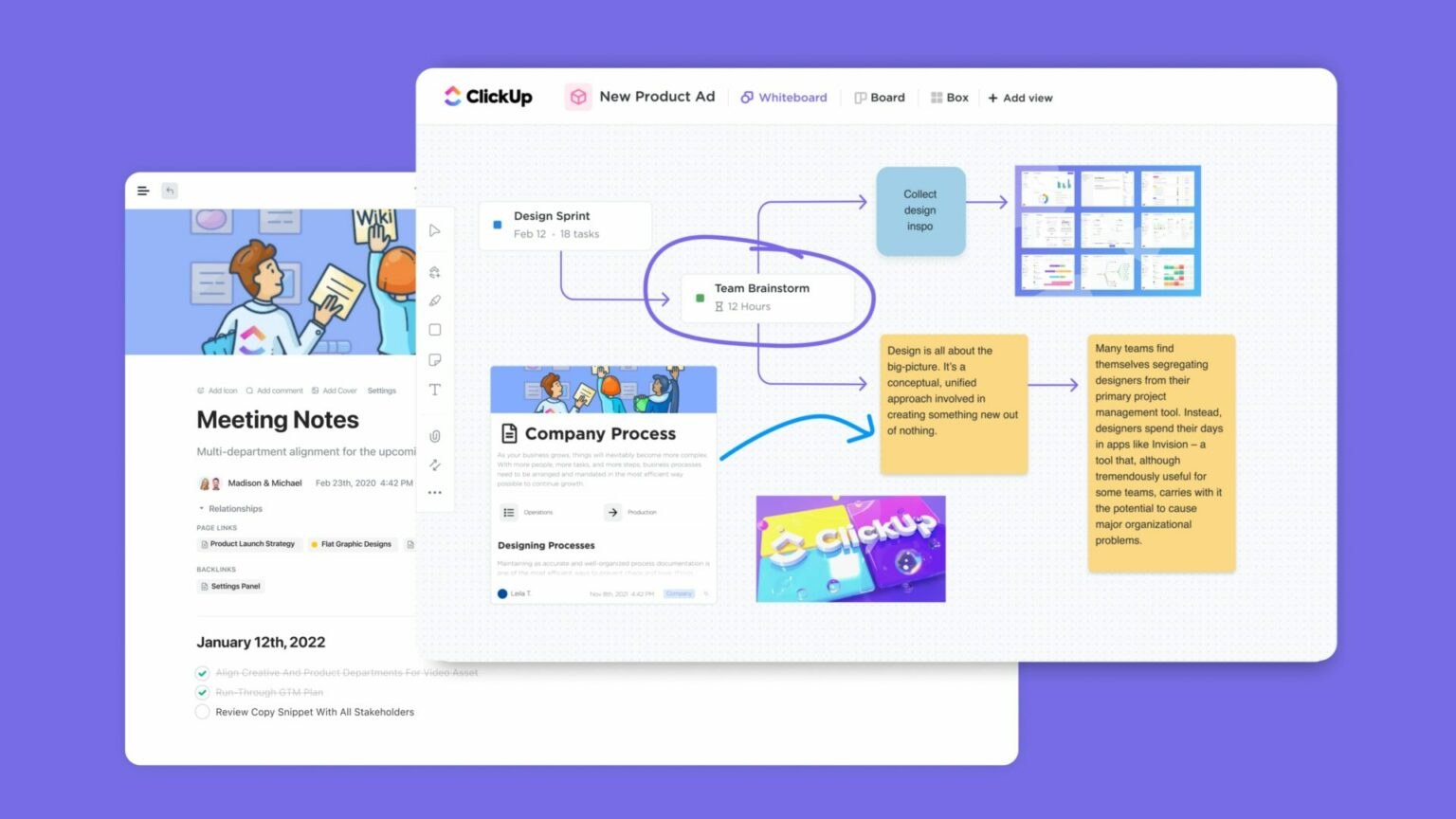
قم بتحويل أفكارك إلى إجراءات منسقة بطريقة يسهل فهمها مع لوحات ClickUp Whiteboards
يمكنك استخدام انقر فوق الخرائط الذهنية و اللوحات البيضاء ClickUp لتسهيل العصف الذهني أثناء الاجتماعات الافتراضية.
كما يمكن للفرق استخدامها لتخطيط وتنظيم المشاريع أو الأفكار أو المهام الحالية. تتيح لك الخرائط الذهنية أيضًا رسم الروابط بين المهام والأفكار، وتخطيط سير العمل باستخدام عقد السحب والإفلات والمزيد.
تشجيع التواصل الاجتماعي
اخلق فرصاً للموظفين عن بُعد للمشاركة في المحادثات القصيرة الافتراضية وأنشطة بناء الفريق. فهو يعزز الشمولية ويساعد على تطوير الصداقة الحميمة مع الحفاظ على مرونة مكان العمل.
احتضان التكنولوجيا
تبرز أدوات مثل ClickUp كمنصات متعددة الاستخدامات تقدم ميزات مثل مشاهدات ClickUp والتي يمكن أن تسهل مساحة مركزية لـ التعاون في الوقت الحقيقي .
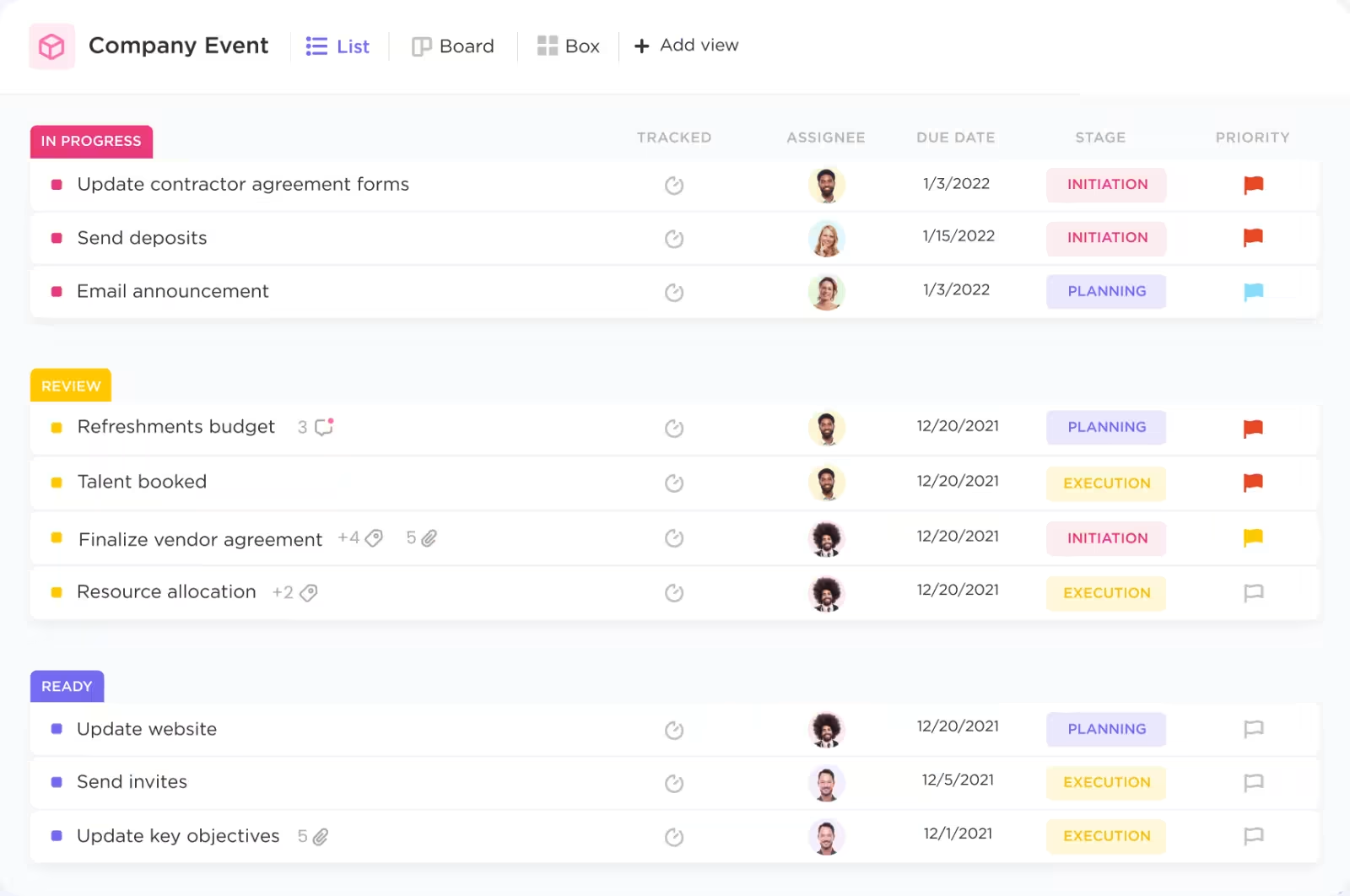
إضفاء الطابع الشخصي على إدارة المهام تجربة مع أكثر من 15+ طريقة عرض ClickUp متعددة الاستخدامات
تحسين جدولة العمل
يمكن أن يكون اعتماد تطبيقات جدولة العمل فعالاً للغاية في تحسين إدارة الجداول الزمنية المرنة.
تأتي هذه التطبيقات بميزات مثل قوالب إدارة الوقت أو لوحات التحكم المركزية التي تمكّن كلاً من الموظفين والمديرين من تتبع ساعات العمل وتنسيقها بسهولة وشفافية أكبر.
مركزية البيانات
تأكد من عدم اضطرار أعضاء فريقك إلى البحث عبر منصات متعددة للوصول إلى المعلومات الضرورية. مستندات ClickUp تمكين الفرق من العمل بشكل تعاوني في مساحة مشتركة، مما يقلل من التكرار والارتباك.
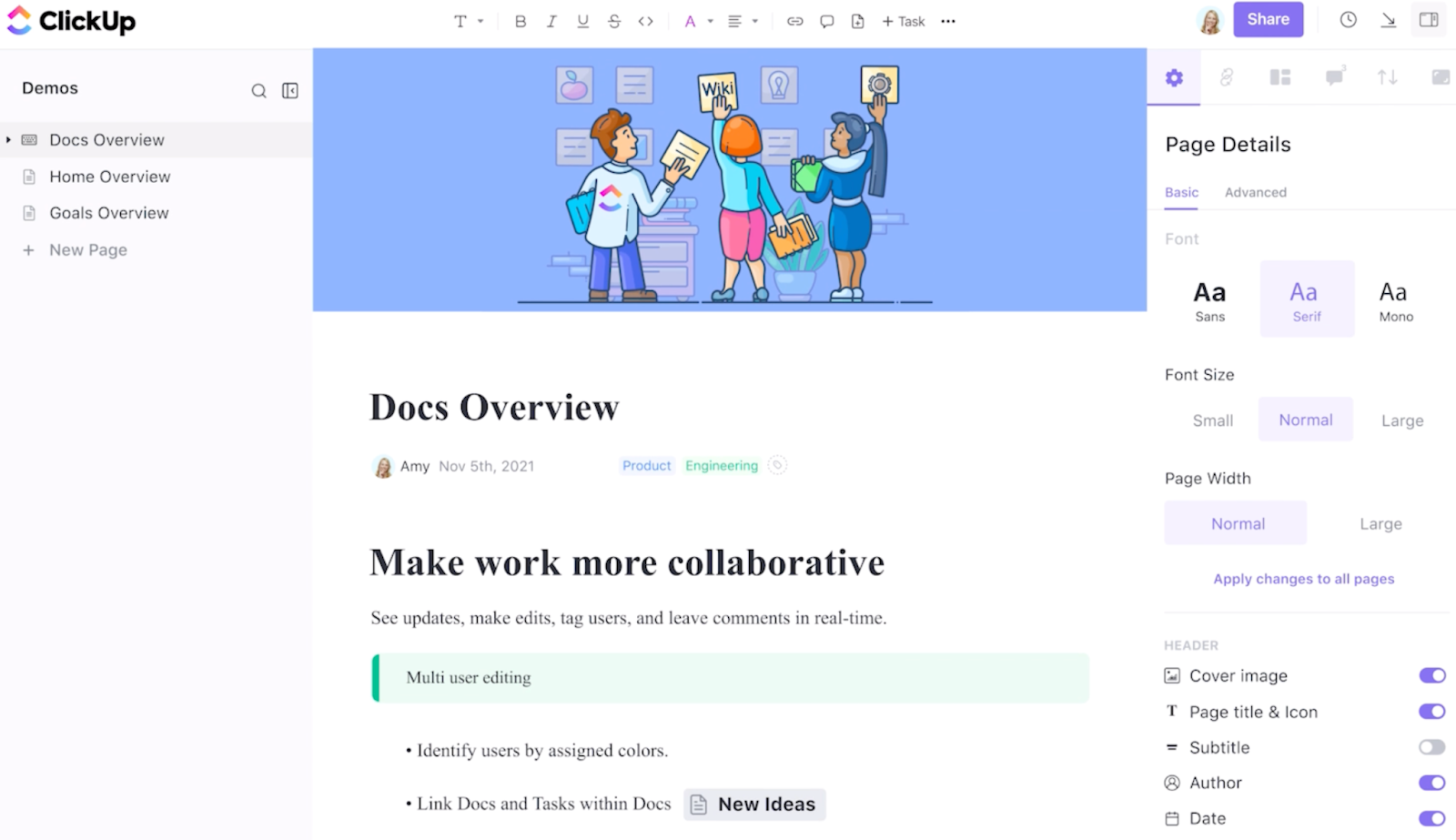
إنشاء مستندات تعاونية جميلة وربطها بالمهام باستخدام ClickUp Docs
يجمع ClickUp أيضًا المهام، والمشاريع، والاتصالات، والأهداف، والمزيد في قاعدة رئيسية واحدة. تكامل ClickUp تساعدك أيضًا على تجميع ومزامنة جميع البيانات المهمة عبر تطبيقات متعددة في منصة واحدة.
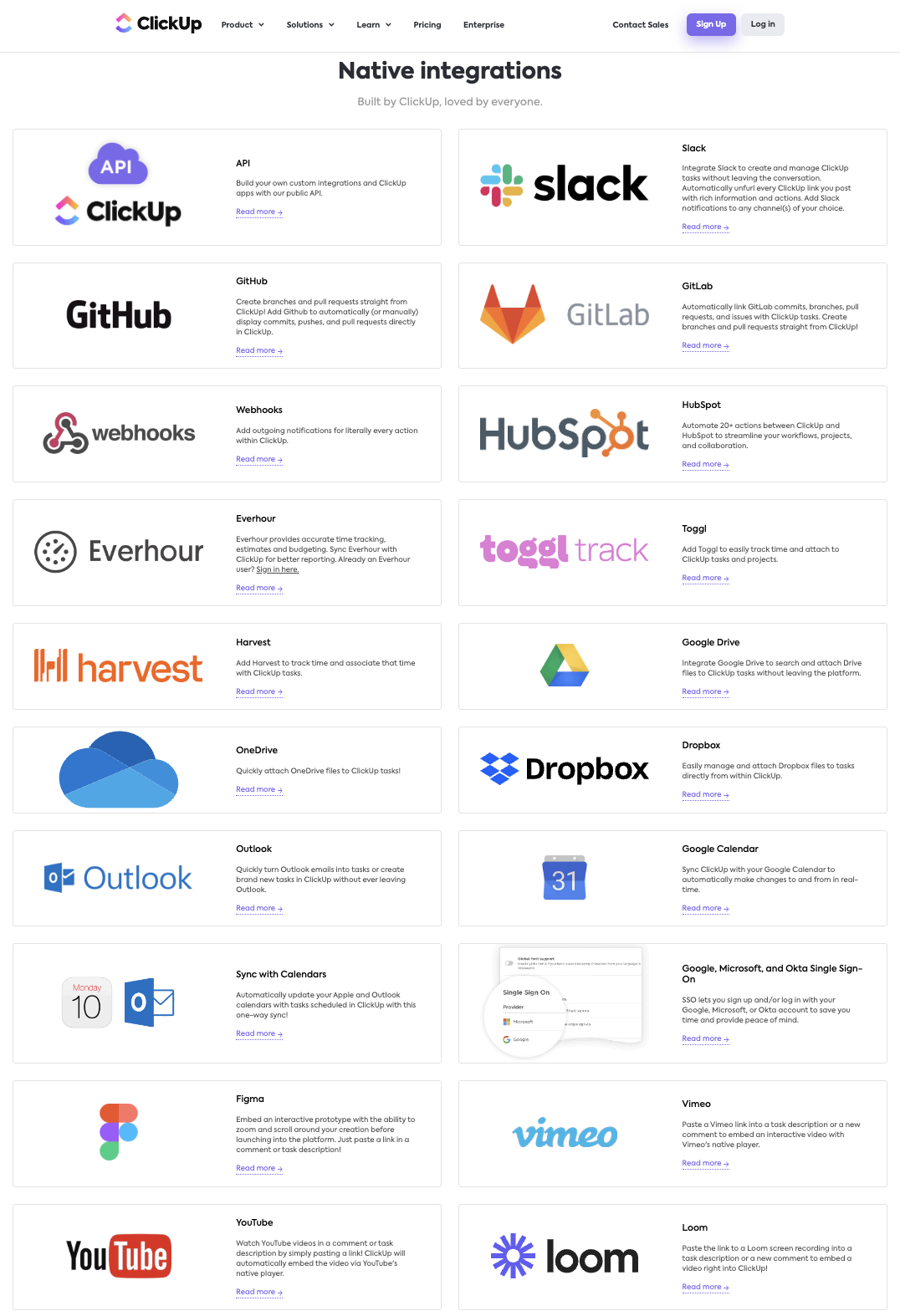
استخدم تكاملات ClickUp لتقليل تبديل السياق عبر تطبيقات متعددة
مع دمج البيانات في ClickUp، يبقى مصدر واحد للحقيقة متزامناً. وهذا يجنبك الارتباك الذي ينبع من مصادر البيانات المبعثرة والمتباينة.
يمكنك إنشاء بيئة عمل فعّالة ومتماسكة من خلال دمج هذه الميزات في استراتيجية إدارة مكان العمل المرنة.
أمثلة واقعية لتطبيق مرونة مكان العمل بنجاح
بعيدًا عن كونها مركزًا للتكاليف، أصبحت المرونة استراتيجية ذكية لتحسين الأرباح النهائية لأي مؤسسة.
بينما تتصارع الشركات في مختلف القطاعات مع الديناميكيات المتطورة لمكان العمل الحديث، يقبل الكثيرون أن نماذج العمل المرنة موجودة لتبقى.
وفيما يلي بعض الأمثلة الواقعية عن كيفية تطبيق الشركات الرائدة لاستراتيجيات المرونة الناجحة في مكان العمل لتعزيز أعمالها من الأسفل إلى الأعلى:
ديلويت
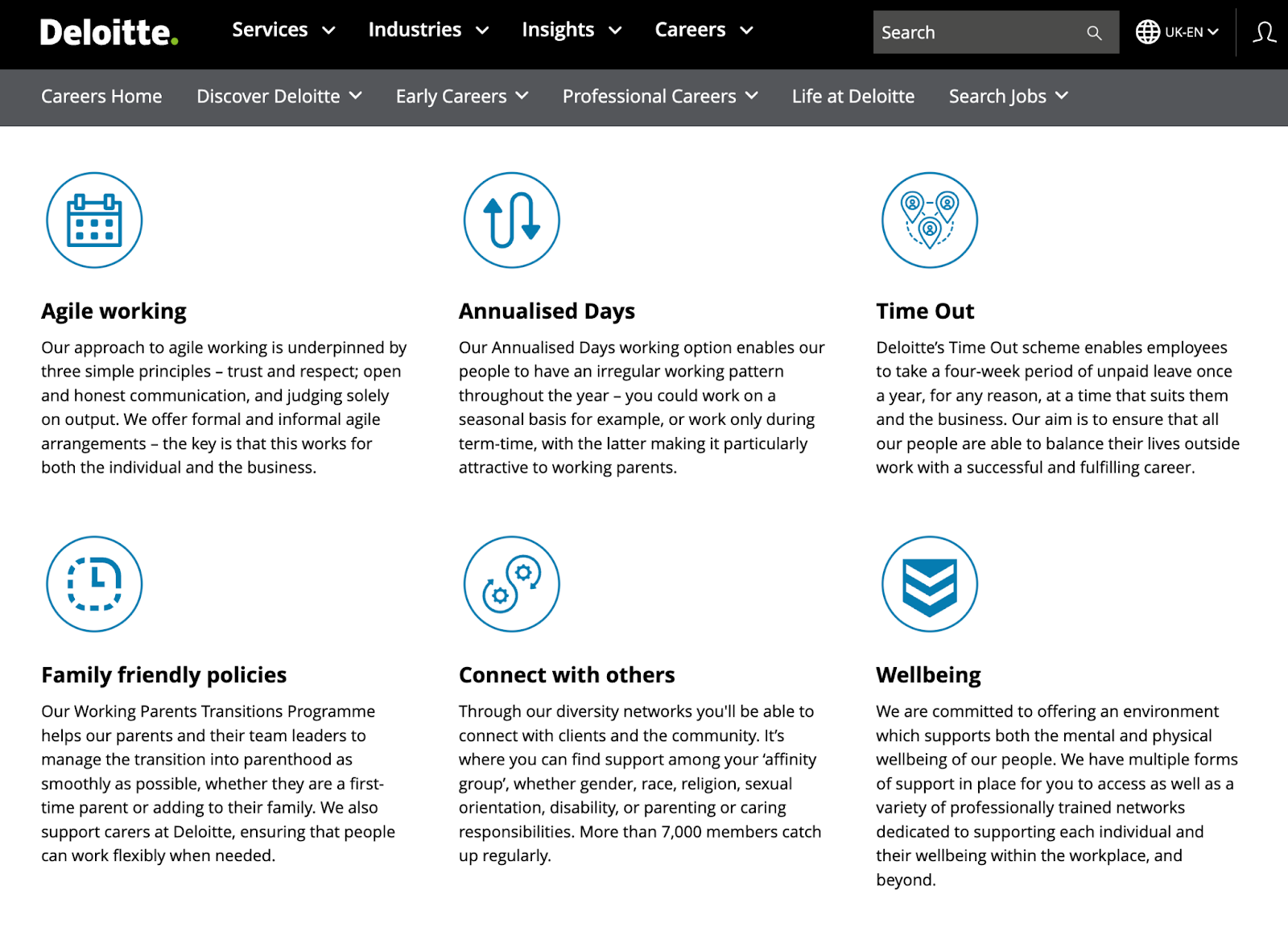
عبر ديلويت يمنح "برنامج العمل الرشيق" في شركة ديلويت الموظفين رأيًا في مكان وزمان وكيفية عملهم. وقد أدى هذا النهج إلى زيادة الإنتاجية وتحسين رضا الموظفين. فهم يؤمنون بأن العمل هو شيء تفعله وليس مكاناً تذهب إليه.
جوجل
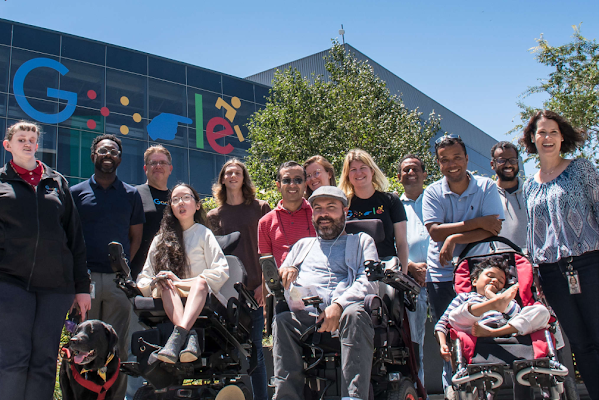
عبر جوجل تقدّر Google منذ فترة طويلة فوائد العمل المرن. وهي أسبوع العمل من أي مكان " وهو حدث سنوي، يشجع الموظفين على العمل من أي مكان يشعرون فيه بأنهم أكثر إنتاجية. وعلى الرغم من أن بعض الوظائف يجب أن تعمل من المكتب عدة مرات في الأسبوع، إلا أن هذه الروح تستمر في سياسات العمل المرنة المستمرة.
Salesforce

عبر فريق المبيعات تقدم Salesforce لموظفيها مرونة في جداول عملهم وموقعهم. وقد أنشأت الشركة أوهانا نظام التصميم" الذي يؤكد على الشمولية ذات الطابع العائلي والشعور بالانتماء، بغض النظر عن مكان تواجد الموظفين.
أمريكان إكسبريس
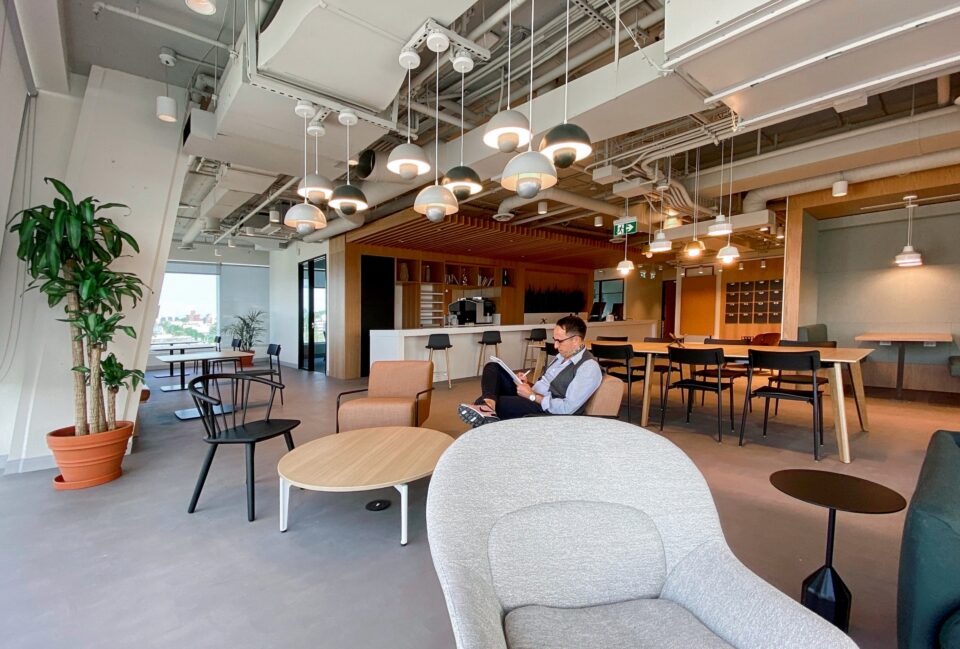
عبر أمريكان إكسبريس تقدم أمريكان إكسبريس مثالاً آخر على كيفية قيام مؤسسة كبيرة بإنشاء مكان عمل مرن.
فقد أنشأت المنظمة بلوورك "، وهو نموذج عمل مرن يصنف الوظائف بناءً على مكان أداء العمل بدلاً من عدد ساعات العمل.
ويتضمن النموذج فئات مثل "المركز" (معظمها في المكتب)، و"المنزل" (معظمها في المنزل)، و"النادي" (مقسمة بالتساوي بين المنزل والمكتب)، و"التجوال" (لا يوجد مكان ثابت)، مما يمنح موظفيها خيارات واسعة للمرونة.
مايكروسوفت
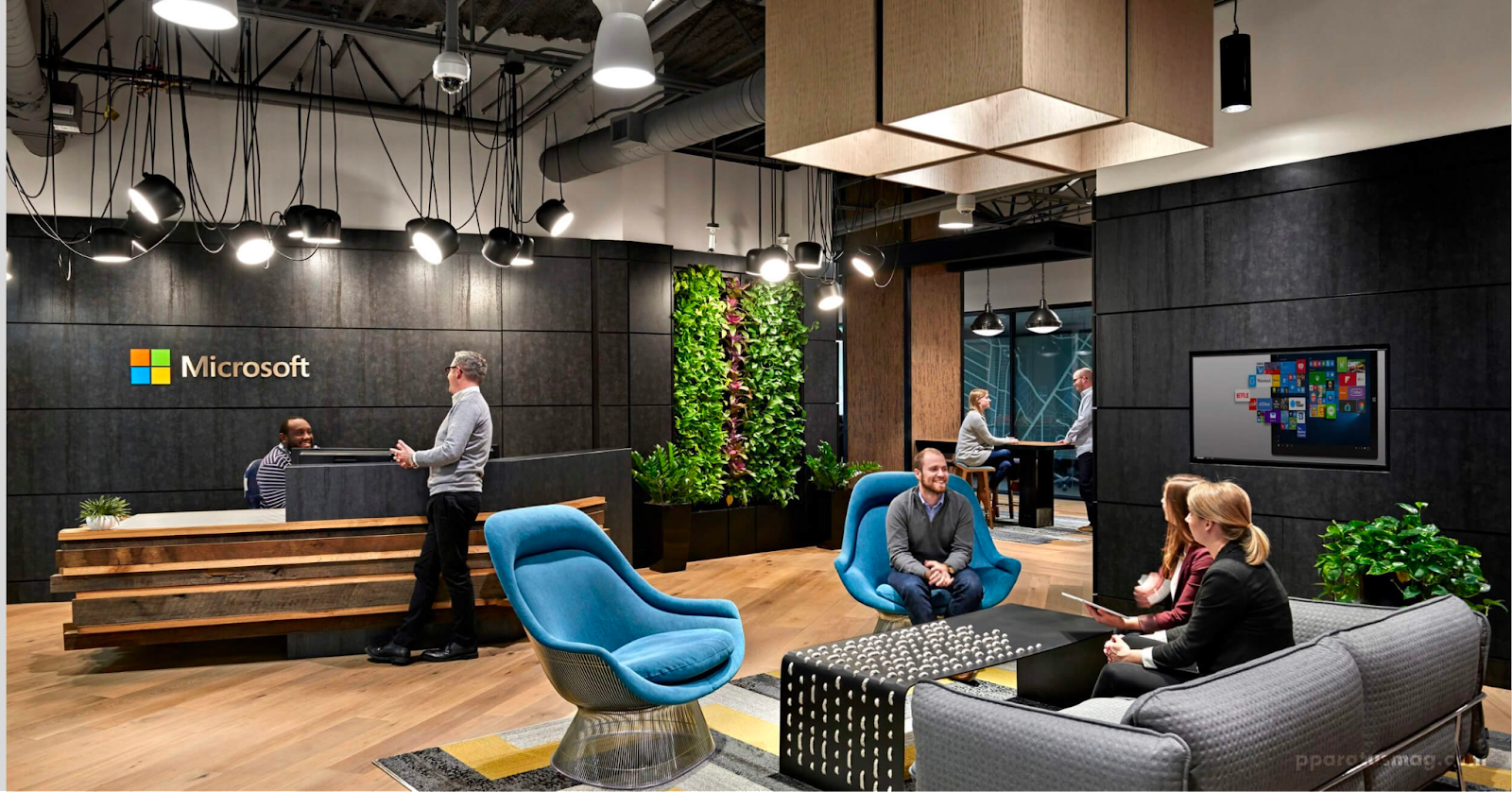
عبر مايكروسوفت تقدم مايكروسوفت لموظفيها مجموعة متنوعة من ترتيبات العمل المرنة، بما في ذلك العمل بدوام جزئي والعمل عن بُعد والجداول الزمنية المرنة. وينصب تركيزها على التوازن بين العمل والحياة الشخصية والإنتاجية، وليس على التواجد الفعلي لموظفيها في المكاتب. على الرغم من أن هناك أدواراً محددة يجب أن يحضر الموظفون إلى المكتب في أيام معينة من الأسبوع، إلا أن خيارات العمل المرنة منتشرة.
خلق "مستقبل عمل مرن" ## خلق "مستقبل عمل" مرن
لا تبرز المرونة في مكان العمل ليس فقط كخيار سياسي بل كتطور ثقافي محوري في تشكيل بيئة العمل المستقبلية.
إن هذا التحول نحو مكان عمل أكثر مرونة وشمولاً وتركيزاً على الإنسان يتجاوز المعايير التقليدية، ويعزز ثقافة يكون فيها التنوع والابتكار والرفاهية من أهم العوامل.
وبالنسبة لمهنيي الموارد البشرية وقادة الأعمال، فإن هذه فرصة سانحة للمختصين في مجال الموارد البشرية وقادة الأعمال لصياغة ثقافة عمل استباقية تتوافق مع الاحتياجات المتطورة للقوى العاملة المتنوعة.
ويمكن أن تساعدك ClickUp في ذلك.
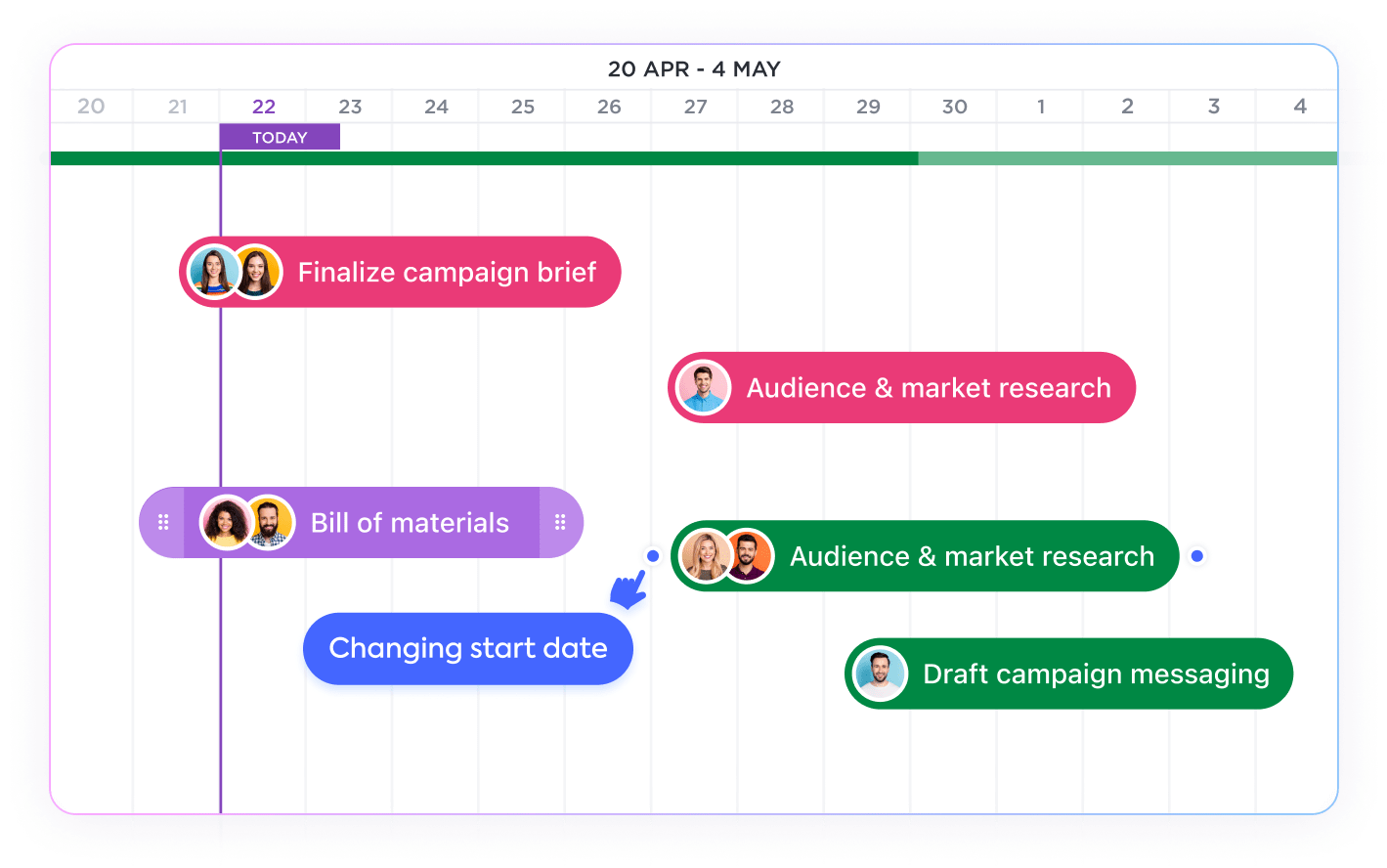
إدارة المشاريع بفعالية مع ClickUp
يوفر ClickUp مجموعة من الأدوات مثل طرق العرض والمستندات واللوحات البيضاء والتكاملات التي تعمل معًا لإنشاء مساحة عمل فعالة ومرنة. فهو لا يعمل على تبسيط العمليات فحسب، بل يبني الثقة ويمنح المديرين النتائج التي يسعون إليها - سواء من داخل المكتب أو من الموظفين عن بُعد أو الموظفين المختلطين.
لذا، اتخذ الخطوة التالية نحو إنشاء قوة عاملة أكثر إنتاجية ورضا. جرّب ClickUp اليوم .
الأسئلة الشائعة الشائعة
1. كيف تؤثر المرونة على الإنتاجية في مكان العمل؟
غالبًا ما تؤدي المرونة في مكان العمل إلى زيادة ملحوظة في الإنتاجية. ويرجع ذلك إلى أنها تتيح للموظفين العمل خلال ساعات ذروة الكفاءة، بما يتناسب مع إيقاعات الساعة البيولوجية والالتزامات الشخصية الفردية.
بالإضافة إلى ذلك، تساعد المرونة في تقليل الإرهاق والإجهاد، حيث يحافظ الموظفون على توازن صحي بين العمل والحياة الشخصية.
عادةً ما يؤدي هذا الشعور بالاستقلالية والتوازن الأفضل إلى مستويات مشاركة أعلى، وتحسين الإنتاجية والتركيز، وبالتالي تعزيز الإنتاجية.
2. ما هي بعض الطرق لزيادة الإنتاجية من خلال إدخال المرونة في مكان العمل؟
يمكن أن يتخذ إدخال المرونة في مكان العمل أشكالاً مختلفة. يمكن لأصحاب العمل توفير خيارات العمل عن بُعد، وساعات عمل مرنة، ومشاركة الوظائف لتوزيع المسؤوليات وساعات العمل بين عدة موظفين.
كما أن فرص العمل بدوام جزئي وأسابيع العمل المضغوطة فعالة أيضًا.
بالإضافة إلى ذلك، يمكن لأصحاب العمل تقديم إجازات غير مدفوعة الأجر للمهام الشخصية أو الأحداث الحياتية وإجازات التفرغ، والتي تسمح بفترة راحة طويلة من العمل للتطوير الشخصي أو الراحة.
3. كيف يساعد برنامج ClickUp في تعزيز المرونة في مكان العمل؟
تقدم ClickUp مجموعة من الأدوات لتسهيل التعاون والتنظيم السلس - وهو بالضبط ما تحتاجه لبناء سياسة مرونة قوية وفعالة وجذابة في مكان العمل.
تساعد ميزاته مثل تعيينات المهام، وعروض التقويم، والمستندات، واللوحات البيضاء، في إنشاء مساحة عمل مشتركة وشفافة. بالإضافة إلى ذلك، تساعد قدرة ClickUp على دمج عمليات وتطبيقات العمل المختلفة في نظام أساسي واحد على تبسيط سير العمل وضمان وصول جميع أعضاء الفريق، بغض النظر عن موقعهم الفعلي، إلى نفس المعلومات والموارد.

